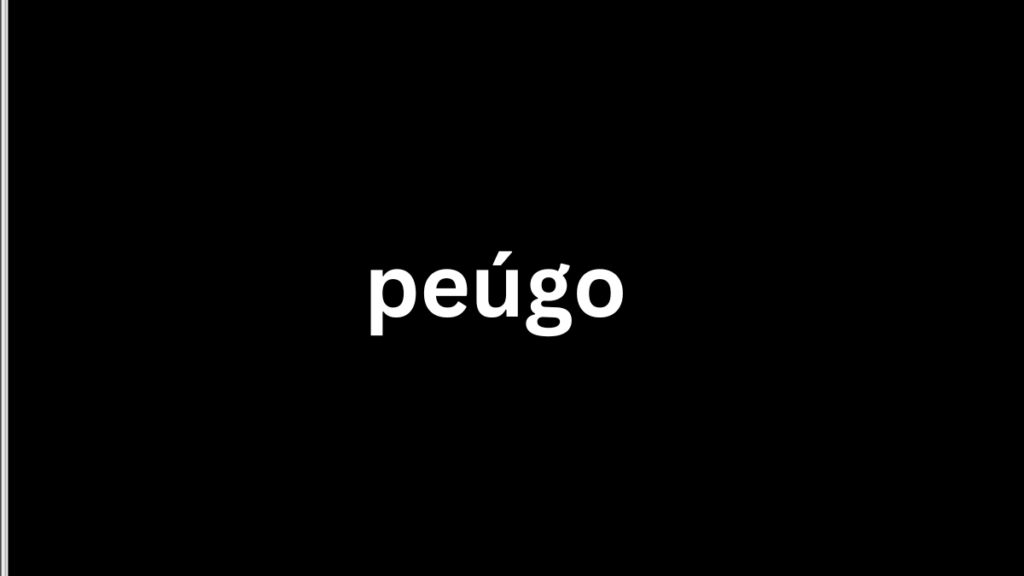Table OF Contents
- 1 Table of the Article
- 2 Introduction to Peúgo
- 3 History and Origins
- 4 Features and Characteristics
- 5 Diet and Feeding Habits
- 6 Behavior and Social Structure
- 7 Reproduction and Life Cycle
- 8 Interaction with Humans
- 9 Conservation Status peúgo
- 10 Challenges and Threats peúgo
- 11 Efforts for Conservation
- 12 Importance in Ecosystem peúgo
- 13 Peúgo in Folklore and Culture
- 14 Future Prospects peúgo
- 15 Conclusion
- 16 FAQs about Peúgo
Table of the Article
- Introduction to Peúgo
- History and Origins
- Features and Characteristics
- Physical Appearance
- Habitat and Distribution
- Diet and Feeding Habits
- Behavior and Social Structure
- Reproduction and Life Cycle
- Interaction with Humans
- Conservation Status
- Challenges and Threats
- Efforts for Conservation
- Importance in Ecosystem
- Peúgo in Folklore and Culture
- Future Prospects
- Conclusion
- FAQs about Peúgo
Introduction to Peúgo
Peúgo, often referred to as the enigmatic creature of the forests, is a fascinating species that captures the imagination of many. In this article, we delve into the depths of the mysterious peúgo, exploring its history, characteristics, behavior, and significance in both natural ecosystems and human culture.
History and Origins
The origins of the peúgo trace back to ancient folklore and mythologies, where it was often depicted as a mystical creature dwelling in dense forests. While its existence remained shrouded in mystery for centuries, modern research has shed light on this elusive species.
Features and Characteristics
Physical Appearance
Peúgos are known for their distinctive physical characteristics, including elongated limbs, dense fur, and large, expressive eyes. Their fur comes in various shades, ranging from earthy browns to vibrant oranges, providing excellent camouflage in their forest habitats.
Habitat and Distribution
These creatures primarily inhabit dense forests and jungles, where they can find ample coverage and resources for survival. While their exact distribution remains uncertain due to their elusive nature, sightings have been reported in various regions across the globe, from tropical rainforests to temperate woodlands.
Diet and Feeding Habits
Peúgos are omnivorous creatures, feeding on a diverse diet of fruits, nuts, insects, and small animals. Their sharp claws and agile limbs enable them to forage efficiently in the dense undergrowth of their forest habitats.
Behavior and Social Structure
Despite their solitary nature, peúgos exhibit complex social behaviors, particularly during the mating season. They communicate through a combination of vocalizations, body language, and scent marking, establishing territories and hierarchies within their communities.
Reproduction and Life Cycle
The reproductive cycle of peúgos is intricately linked to seasonal changes, with females giving birth to litters of one to three offspring after a gestation period of several months. Young peúgos are raised under the watchful eye of their mother, learning essential survival skills before venturing out on their own.
Interaction with Humans
While encounters with humans are rare, peúgos have played significant roles in indigenous folklore and cultural traditions. Stories of their elusive nature and mystical abilities have captivated the human imagination for generations, inspiring tales of adventure and exploration.
Conservation Status peúgo
Despite their mythical allure, peúgos face numerous threats to their survival, including habitat loss, poaching, and climate change. Conservation efforts are underway to protect their remaining habitats and raise awareness about the importance of preserving biodiversity.
Challenges and Threats peúgo
The encroachment of human activities into pristine forest habitats poses a significant threat to peúgo populations, disrupting their natural behaviors and reducing available resources. Illegal logging, hunting, and habitat fragmentation further exacerbate their vulnerability to extinction.
Efforts for Conservation
Conservation organizations and wildlife agencies are working tirelessly to address the challenges facing peúgos and their habitats. Initiatives such as habitat restoration, anti-poaching measures, and community outreach programs aim to safeguard these unique creatures for future generations.
Importance in Ecosystem peúgo
As keystone species in their forest ecosystems, peúgos play crucial roles in maintaining ecological balance and biodiversity. Their foraging habits help disperse seeds and regulate insect populations, contributing to the health and resilience of their habitats.
Peúgo in Folklore and Culture
Peúgos hold special significance in indigenous folklore and cultural traditions, where they are often revered as guardians of the forest and symbols of wisdom and resilience. Their mystical allure continues to inspire storytellers, artists, and adventurers around the world.
Future Prospects peúgo
The future of peúgos remains uncertain, as ongoing conservation efforts strive to mitigate the threats facing their survival. Through collaborative action and global awareness, we can ensure that these enigmatic creatures continue to thrive in their natural habitats for generations to come.
Conclusion
In conclusion, peúgos represent a fascinating blend of mystery, beauty, and ecological importance. By understanding and appreciating the unique role they play in forest ecosystems and human culture, we can work together to protect and preserve these extraordinary creatures for the benefit of all.
FAQs about Peúgo
- Are peúgos real animals, or are they purely mythical creatures?Peúgos are indeed real animals, although their elusive nature has contributed to their mythological status in various cultural traditions.
- What are the biggest threats to peúgo populations?Habitat loss, poaching, and climate change are among the most significant threats facing peúgo populations today.
- Do peúgos have any natural predators?While peúgos are skilled at avoiding detection, they may occasionally fall prey to larger carnivores such as jaguars and large birds of prey.
- How can individuals contribute to peúgo conservation efforts?Individuals can support peúgo conservation efforts by raising awareness, supporting conservation organizations, and advocating for sustainable land use practices.
- Are there any ongoing research projects focused on peúgo behavior and ecology?Yes, scientists are actively studying peúgo behavior, ecology, and genetics to better understand their unique adaptations and conservation needs.

